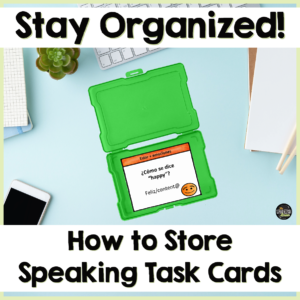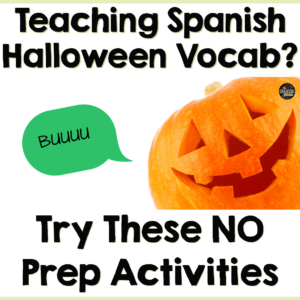Raise your hand if you have ever taught out of a textbook? And you got to a chapter with a long list of vocabulary words that your students really didn’t care about. You could feel yourself putting on your “theatrical mask of fake happiness” as you start the unit and try to get the students pumped up. Meanwhile you can hear them groaning and asking “why do we have to learn this?”
I’ve been there. I had to teach a chapter on camping. Camping? We live in one of the largest metropolitan areas in the country. Sigh. Try to get students to make personal connections to that topic…
Fast-forward to 2011 and I was given the greatest gift of my teaching career. I was asked to teach a service learning course at the Spanish 4 level. I designed the curriculum around major issues that face the Spanish-speaking populations in the United State– topics like identity, systemic challenges in Central America, Immigration, and issues in our local Spanish-speaking communities. We used authentic resources, documentaries, interviewed real people, and created Capstone projects to make an impact on our community.
It was powerful.
My students were engaged at a level I had never before seen. They were so motivated to use their Spanish skills. They saw the purpose behind what we were doing. It was awesome.
How did incorporating social justice impact me as a teacher?
I would come home so energized and excited. My husband would ask me all the time how I could replicate this level of engagement at the lower levels. At first I thought it would be too hard since my students wouldn’t have enough language skills.
But then we got to the food chapter, which used to be one of my favorites. Who doesn’t love talking about food? And it dawned on me… why are we simply talking about lists of food when we could be talking about access to food? It would be so much more powerful and meaningful if my students were exposed to some of the challenges faced in Latin America around food?
I began to develop 2 units around access to food and water in Central America. I knew that they had to be project-based units. After learning such important information, students want to apply that knowledge. So our unit projects are designed to help our school community understand more about our local access to food and water.
What happened to my students’ Spanish?
So what happened in my classroom after I transformed the curriculum? “Spanish” was no longer the sole goal/purpose of the class. Rather, we used Spanish as a tool to access greater topics. By talking about things that matter, students were so engaged in the topic that they wanted to use Spanish desperately to share their thoughts and opinions. As soon as they “forgot about Spanish” and their worries about it being perfect or using the correct verb ending, their language skills exploded. Their desire to communicate superseded their insecurities about their skills. Engaging content does matter. Simultaneously, my students became ambassadors of knowledge. One student came to school after Thanksgiving break and told me how she had gotten into a debate with one of her uncles, told him everything we had learned, and recommended that he watch some documentaries. Boy did that bring tears to my eyes!
So why should we incorporate topics of social justice into our Spanish classrooms?
- The content is more engaging
- Their desire to communicate in Spanish will increase
- Your students’ Spanish will improve
- Your satisfaction as a teacher will skyrocket
- Your students will be intrinsically motivated to make a positive impact on the world
- Project based lessons allows them to make positive change in their own community
Curious about the details of how I transformed my classroom? This post details my journey and this post describes the nults and bolts of putting together the unit on food deserts.




No Comments